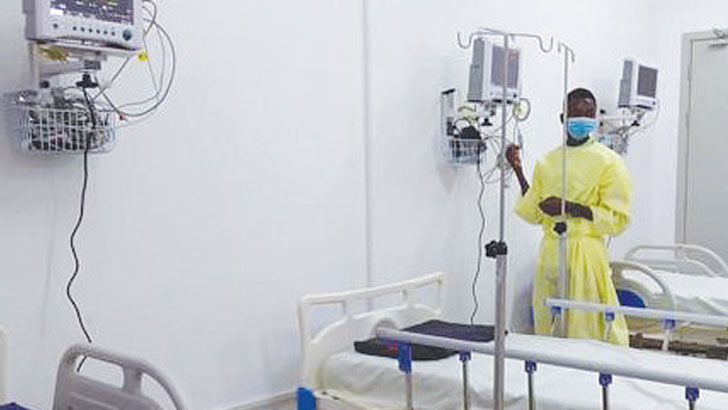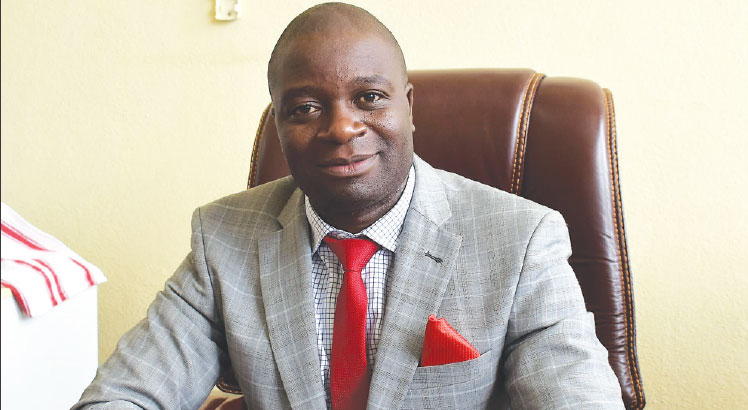Oxygen cylinders Deficit stirs panic
There is panic in district hospitals nationwide over a shortage of oxygen cylinders amid growing numbers of patients being treated as inpatients for Covid-19 and requiring medical oxygen boost.
Random checks at 10 of the district hospitals established that nearly all of them face a deficit of oxygen cylinders and accessories such as flow meters.
The Society of Medical Doctors (SMD) has since
described the shortage of cylinders at this critical point of fighting the coronavirus pandemic as a case of lack of proper planning. described the shortage of In an interview on Wednesday, Chitipa District director of health and social services Dr. William Ching’ani said the district hospital is surviving on four cylinders against a requirement of 20. He also said the district lacks an emergency treatment centre.

By Wednesday, Karonga District had eight Covid-19 patients while the district hospital has four cylinders and one flow meter, according to district director of health and social services Dr. David Sibale.
He said Karonga requires 20 more cylinders and five flow meters to handle what he described as an overwhelming number of patients.
Said Sibale: “Two weeks ago, we had 15 admissions and a good number of them needed oxygen. ”
Thyolo District Hospital needs 20 cylinders, but is making do with seven, according to district director of health and social services Dr. Arnold Jumbe who said the facility was treating as in-patients six Covid-19 cases as of Wednesday.
He said while there were five oxygen flow meters, the hospital requires about 15 to function properly.
In a telephone interview on Wednesday, Ntcheu District director of health and social services Dr. Stephen Macheso said on average the district hospital has eight patients at a time, with a daily admission rate of two to three.
“We have six cylinders. It is not always that all patients will need cylinders, but it is important to have adequate numbers considering our admission rate.
“I can estimate that we need about 24 cylinders. In the meantime, we have allocated six concentrators to help out,” he said.
Macheso also decr ied challenges in terms of contact tracing for Covid-19 cases largely because some communities were bullying health workers
accusing them of transmitting the virus.
He said this is affecting the efforts to have more people tested for Covid-19 in the districts.
Checks at Dedza, Mangochi, Kasungu, Mchinji, Dowa, Mulanje and Nkhotakota district hospitals established the same trend of fewer cylinders and more inpatients.
Besides Covid-19, most of the district hospitals also handle accident victims and other critical cases requiring medical oxygen to save lives.
In an interview on Wednesday SMD president Dr. Victor Mithi said cylinders are an essential component in the treatment of Covid-19 cases, especially those experiencing shortness of breath, as the cylinders have higher oxygen flow compared to concentrators; hence, more suitable for patients with respiratory complications. SMD president Dr. Victor
He said with a cylinder, one can decide on how much oxygen to supply to a patient and they are not too dependent on electricity, making them even more suitable in a country where power outages occur frequently.
The shortage of cylinders and other accessories raises questions on what the allocations for the health cluster were used for after a concern was raised last July on lack of cylinders.
At the time, Minister of Health Khumbize Chiponda said government would release money for the procurement of cylinders.
In the National Covid-19 Preparedness and Response Plan under the Health Cluster procurement of equipment for health facilities is one of the areas allocated funds as a priority.
In one of his addresses to the nation on the Covid-19 situation, President Lazarus Chakwera said the Health and Local Government clusters, expected to take care of health facilities, had a lion’s share of the now contentious K6.2 billion.
Mithi said it was unfortunate that the health facilities were lacking the cylinders 10 months after the pandemic struck the country. Mithi said the lack of equipment is not only life-threatening, but too frustrating to health workers.
“It really pains to see someone dying because we do not have the basics,” he lamented.
In an interview on Wednesday evening, Afrox Malawi Limited managing director Bornface Chima, whose company is the major supplier of cylinders and gas, said they have converted 400 technical (industrial) cylinders into medical ones to support Lilongwe, especially Kamuzu Central Hospital (KCH) as well as Mzuzu and surrounding hospitals.
He said: “The conversion is done to meet the high demand for oxygen cylinders because what they have ordered [300 cylinders] may take up to August before arriving in the country.
“The converted cylinders bring the total number of cylinders supplied to hospitals to 800.”
On his part, Ministry of Health Principal Secretary Dr. Charles Mwansambo said government floated a call for suppliers on the Public Procurement and Disposal of Assets Authority website for the supply of 1 000 medical cylinders to be paid for using part of the K17 billion the President recently ordered to be released.
But he acknowledged that the 1 000 cylinders may take time to procure because of processes which include procuring, manufacturing and shipping.
On why government had not ordered the cylinders last year using part of the K6.2 billion disbursed last August, Mwansambo said they purchased 200 industrial cylinders from Galaxy Phamaceutiacals to support oxygen plants.
Meanwhile, in a bid to ease the problems faced by district hospitals, some citizens are mobilising resources to buy equipment, including PPE





